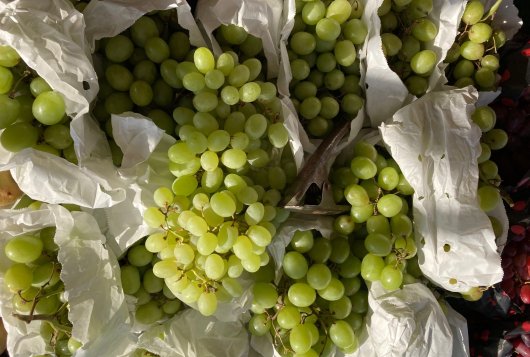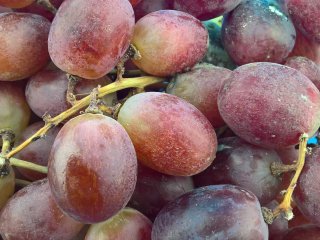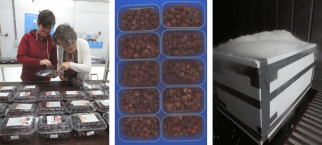
Research Results
Botrytis suppression in grapes
The growth of the fungus Botrytis cinerea is a key post-harvest challenge for the grape industry. The GreenCHAINge project studied if CO2 would be an effective alternative for SO2 to suppress the growth of Botrytis during transport.

Objective
The growth of Botrytis cinerea in table grapes is a significant post-harvest issue. SO2 is a very effective fungicide and slow-release SO2 systems are routinely used in reefer-container grape transport. However, the negatives of SO2 as a fungicide are serious: it accelerates corrosion, bleaches the fruit and certain consumers are allergic to the sulphite deposits. Crucially, SO2 is legally forbidden for transport of organic grapes. Within the GreenCHAINge project, a search for alternatives was performed.
The experiment
Wageningen scientists performed repeated lab experiments and field trials transporting grapes from South Africa to the Netherlands to determine if 12% CO2 could be a viable alternative to SO2. It is, and caused no damage or off- tastes. An atmosphere of 12% CO2 seems the most promising alternative to SO2. Transport under higher CO2 percentages would further suppress Botrytis growth, but would also increase the risk of adverse effects on quality such as off-tastes and browning.
Controlled Atmosphere units cannot supply CO2, and grape-respiration rates are low. So the container must be air-tight, or preferably an additional source of CO2 must be provided. Experiments proved that dry ice is a suitable source of CO2. A patent application on this innovation has been filed.

Conclusion & Future perspective
Substituting 12% CO2 (for SO2) appears promising to suppress Botrytis growth on table grapes, both in organic and in regular grape production.
The first commercial high-CO2 shipments of organic grapes have occurred. For non-organic grapes SO2 remains financially more attractive than CO2.
However, it is expected that measures will be taken to discourage, or even ban, the use of SO2 as a (transport) fungicide. That would open a much broader application area for the use of dry ice as a source of CO2 to prevent Botrytis growth during longer-duration grape transport.